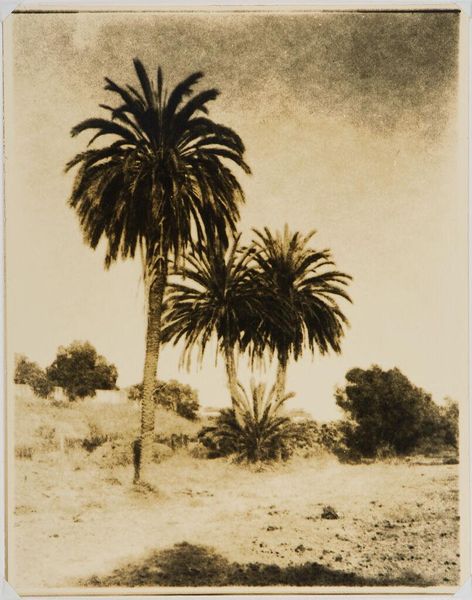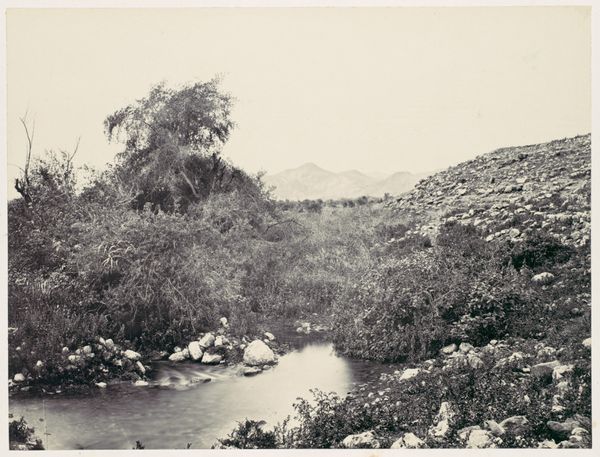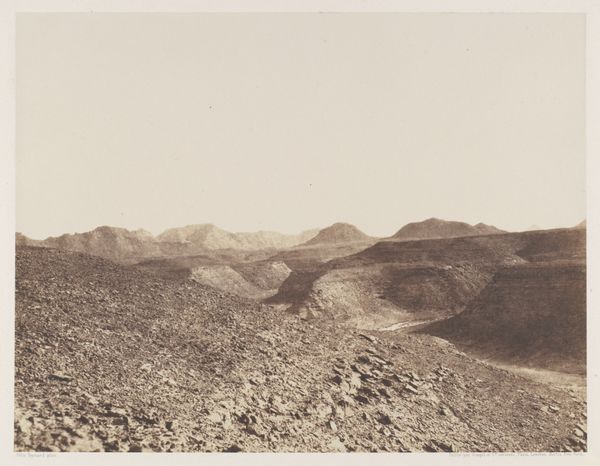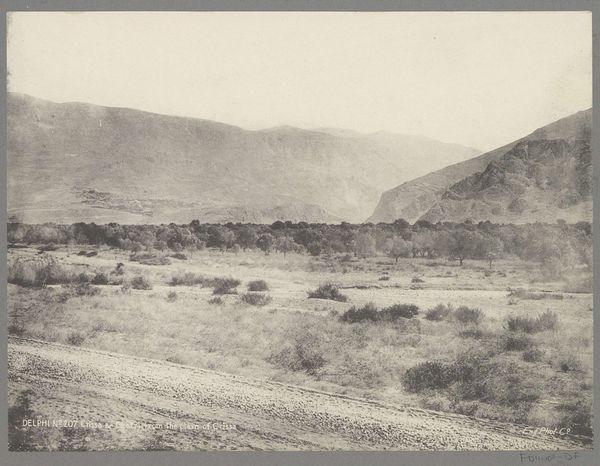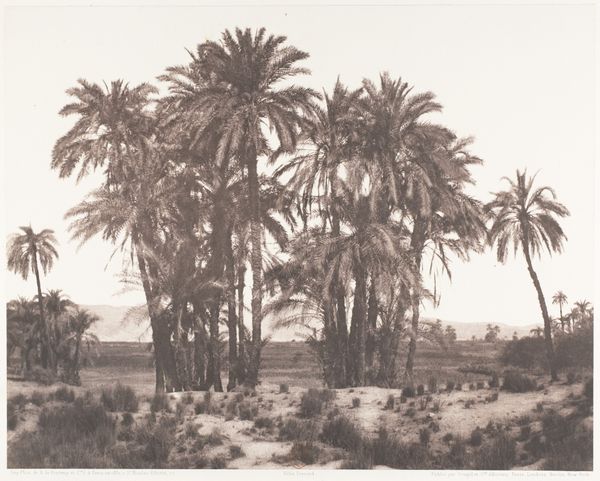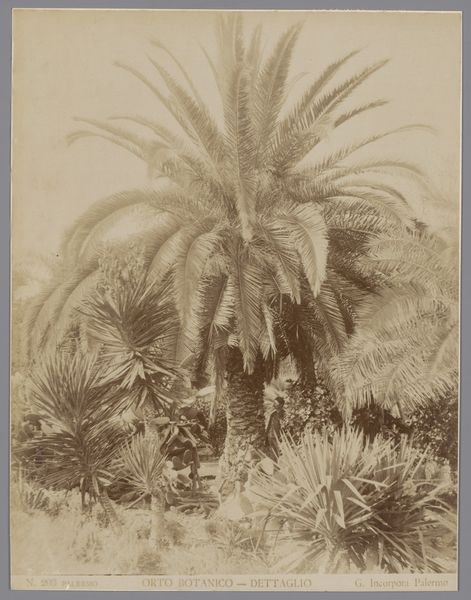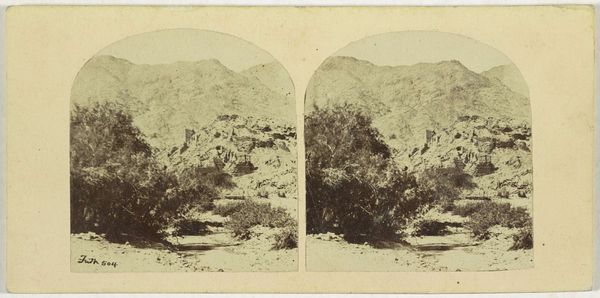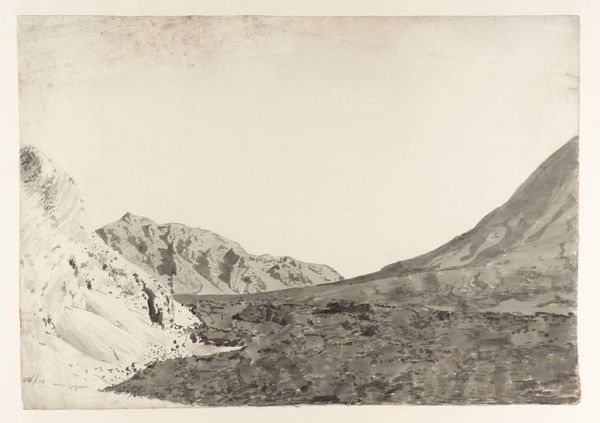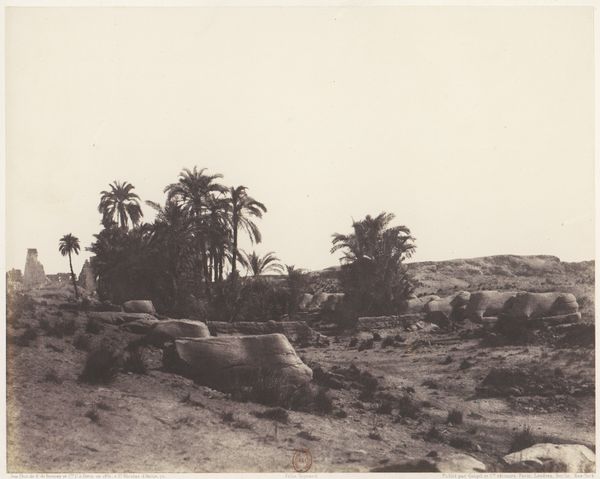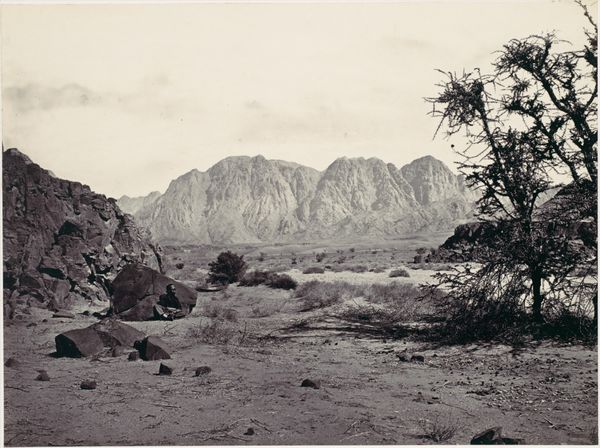
Environs de Fîleh, Palmier Doum sur la Rive Orientale du Nil 1851 - 1852
0:00
0:00
daguerreotype, photography
#
landscape
#
daguerreotype
#
photography
#
orientalism
Dimensions: 23.7 x 30.8 cm. (9 5/16 x 12 1/8 in.)
Copyright: Public Domain
Editor: So, here we have Félix Teynard's "Environs de Fîleh, Palmier Doum sur la Rive Orientale du Nil," a daguerreotype from around 1851. I'm really struck by the texture, the almost gritty feel the process gives to the sand and the palm tree itself. How would you approach interpreting this piece? Curator: From a materialist perspective, I find the daguerreotype process itself incredibly significant. Think about what it took to produce this image: the specific materials, the laborious chemical processes, and the extended exposure time. It wasn't simply pointing and shooting. This lengthy process inflects our reading of the social context here: French colonialism, scientific expeditions and a desire to dominate the East. Editor: That's interesting. I hadn't thought so much about the labor involved. So the very act of making the photograph speaks to the relationship between France and Egypt at that time? Curator: Precisely! The daguerreotype wasn't a democratic medium. It was expensive, time-consuming, requiring specialized skills. The production and distribution of images like this served colonial interests, documenting and exoticizing the 'Orient' for European consumption and reinforcing a power dynamic. How are these landscapes different from photographs of the "West"? Editor: Right, it's about more than just a pretty picture of a palm tree. It represents a particular way of seeing and controlling a place and its resources through this very specific technological lens. Curator: Exactly! The image isn’t just passively reflecting reality, it is actively constructing it. We need to consider who is enabled to represent who, and through what means. What social stories are written into the materials of this image? Editor: Wow, I’m definitely going to consider the material conditions of art production more closely now! Thank you! Curator: Absolutely. Considering the process and materials really opens up the work to deeper levels of social and political understanding.
Comments
No comments
Be the first to comment and join the conversation on the ultimate creative platform.
